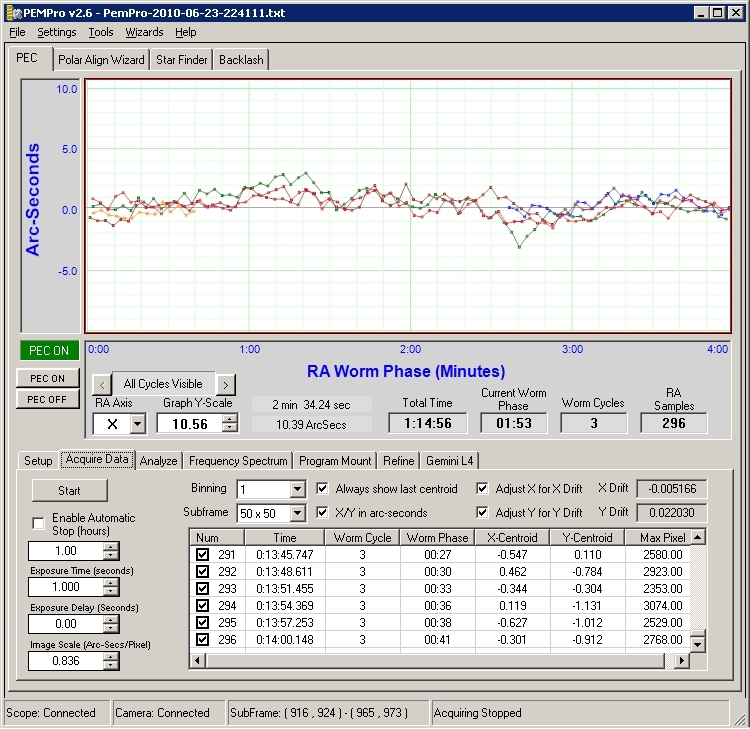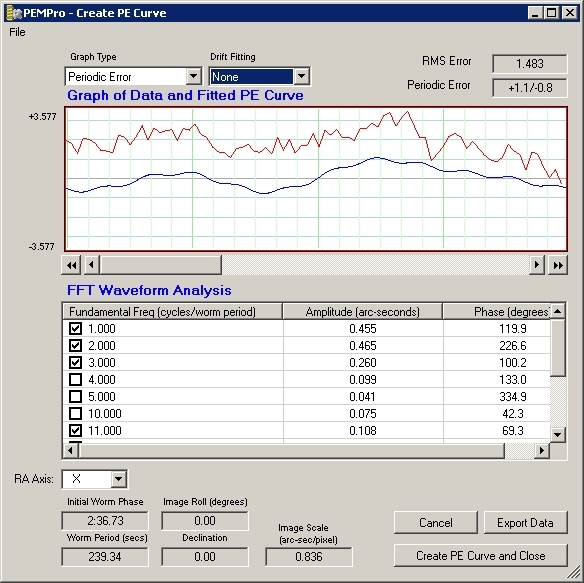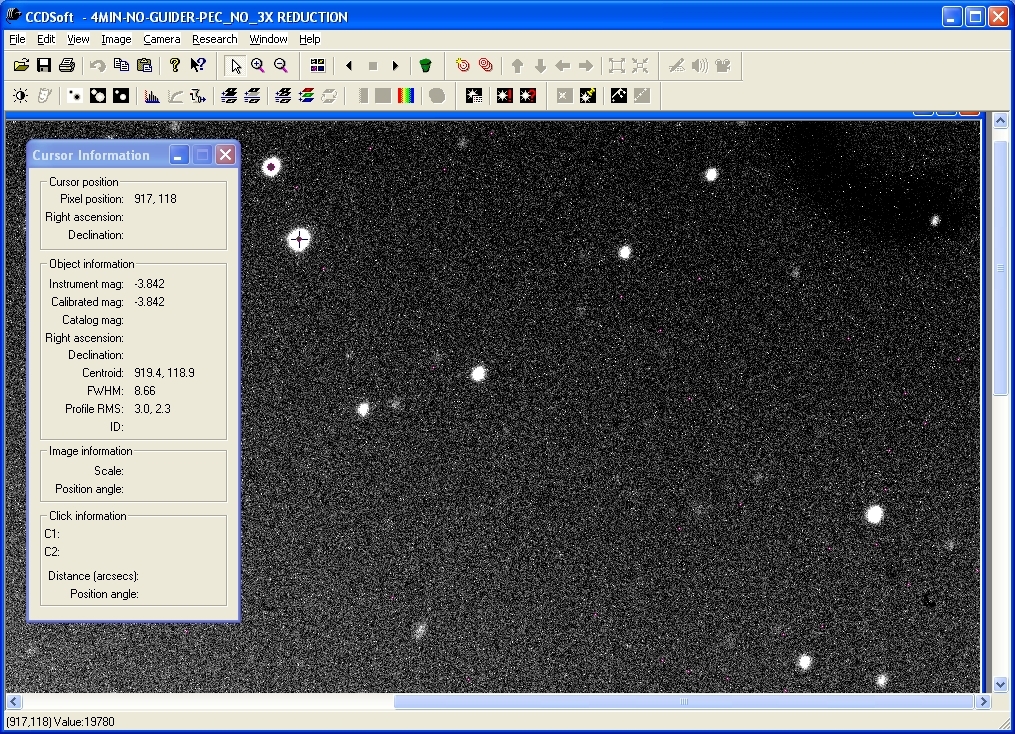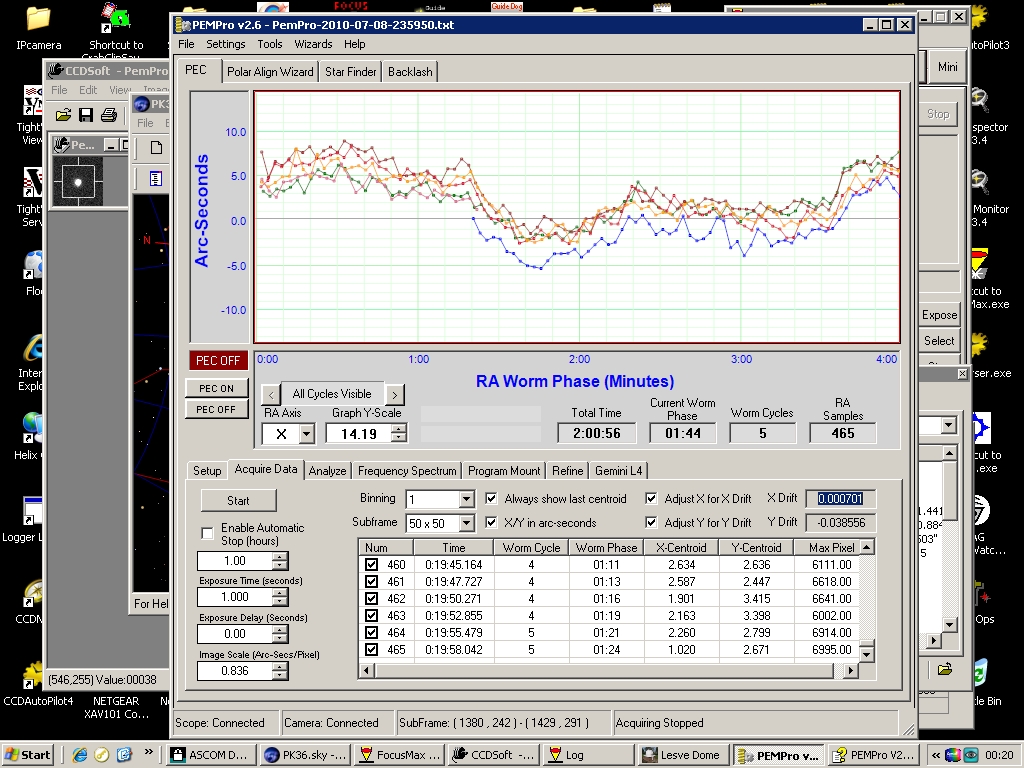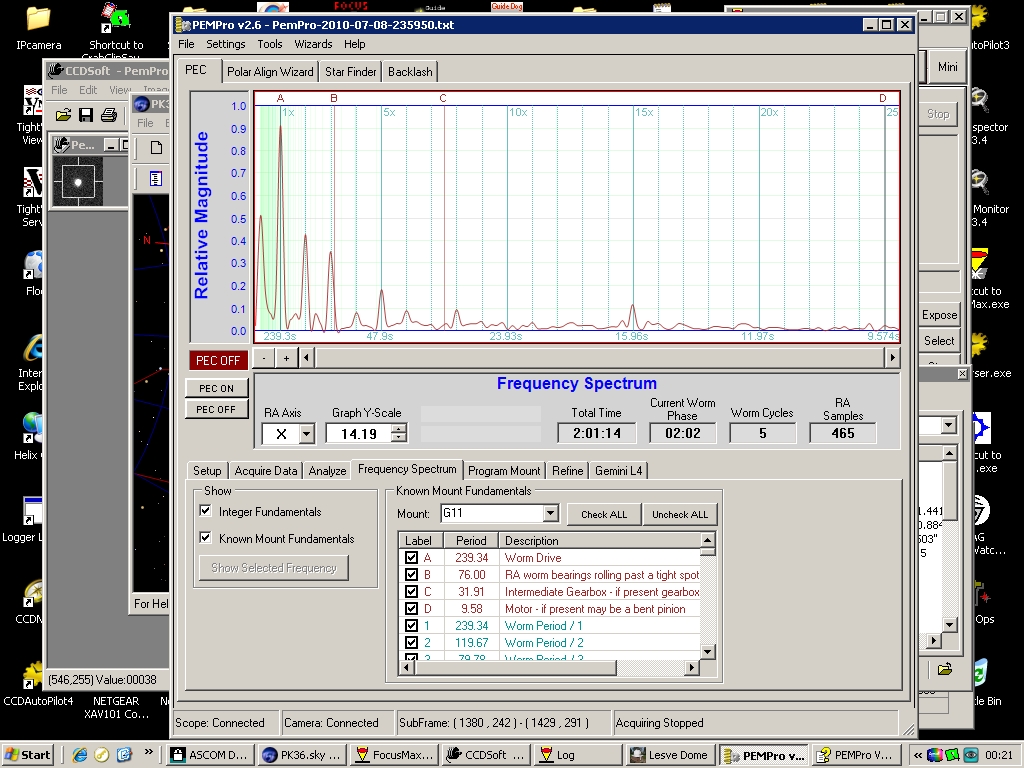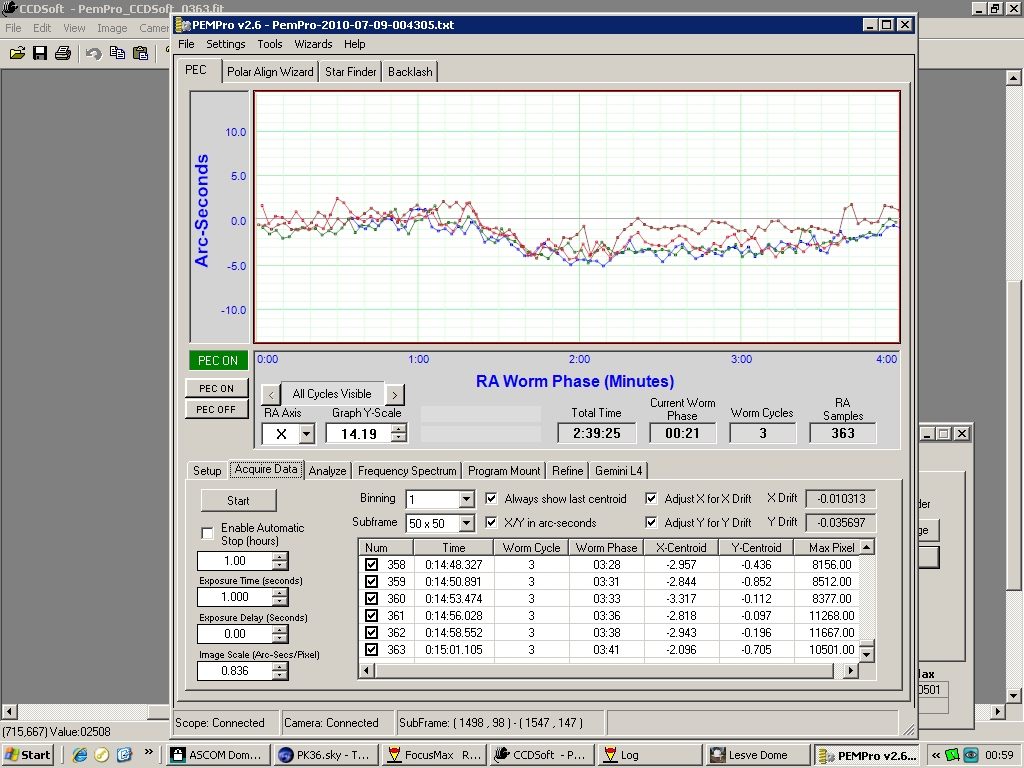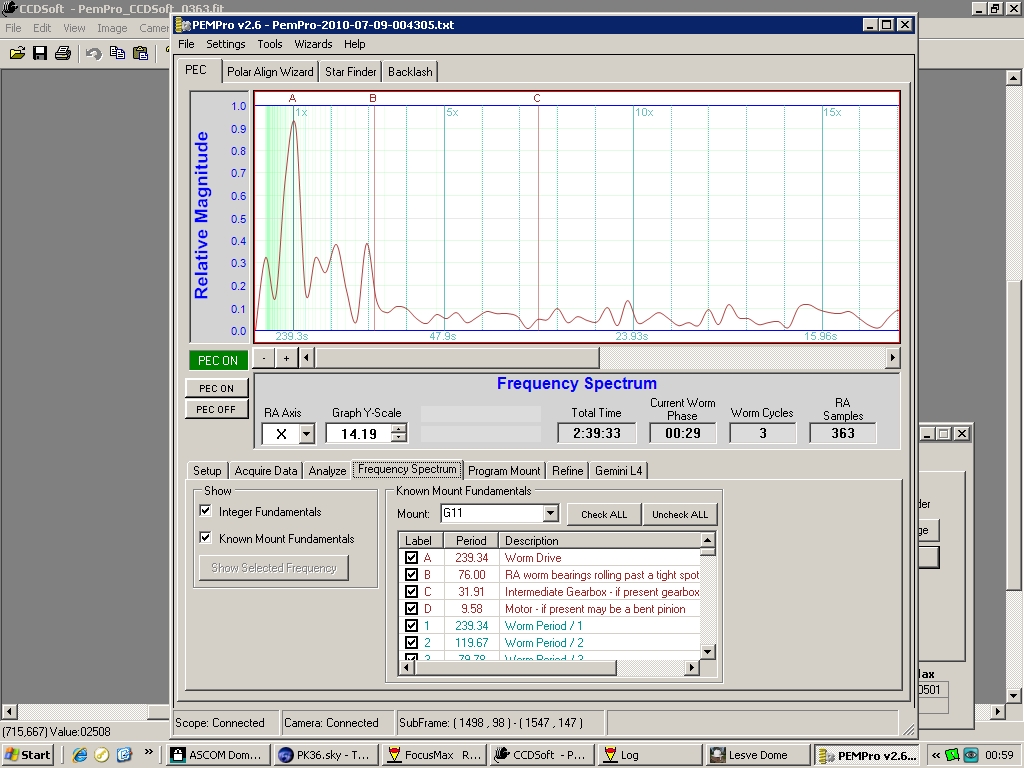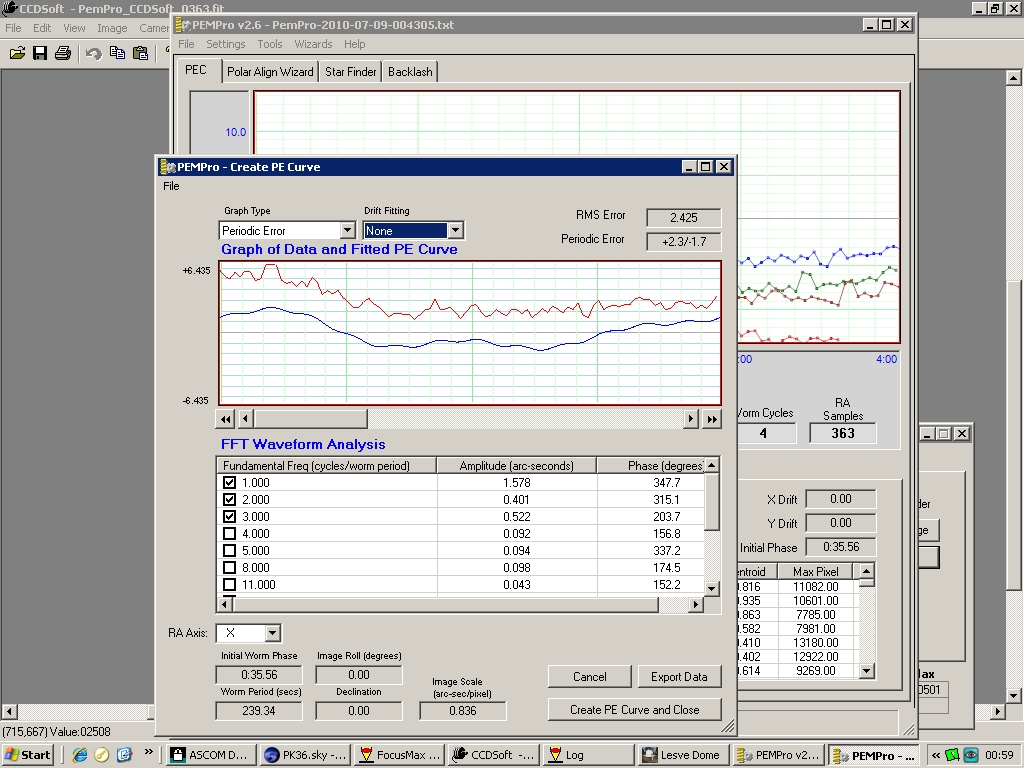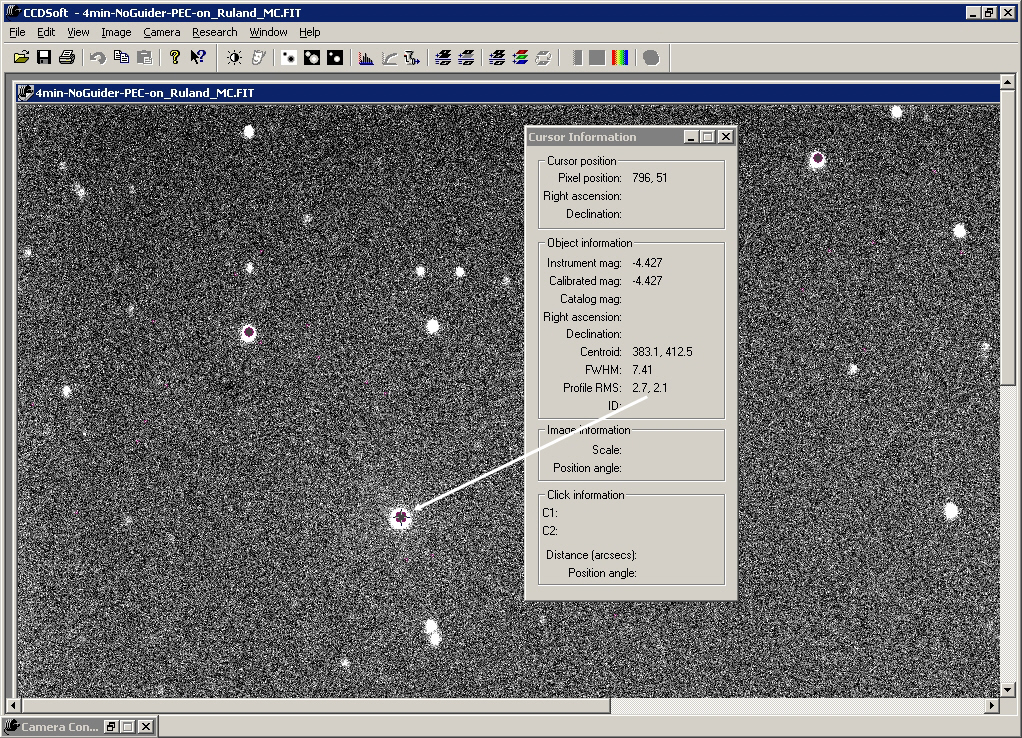Test series of the original Losmandy Gemini gearbox and the high precision McLennan gearbox using the Ruland coupler. PemPro V2
was used to measure PE, generate PEC and plot the performance results.
This series of tests include:
Note: PemPro does allows you to fine tune the PEC profile by adjusting drift and delays. I've included drift fitting screen shots to show 'none' and the best fit for comparisons.
Ruland coupler with Losmandy Gemini stock gear box tests
(Clicking on the images will open a larger version to better see the details)
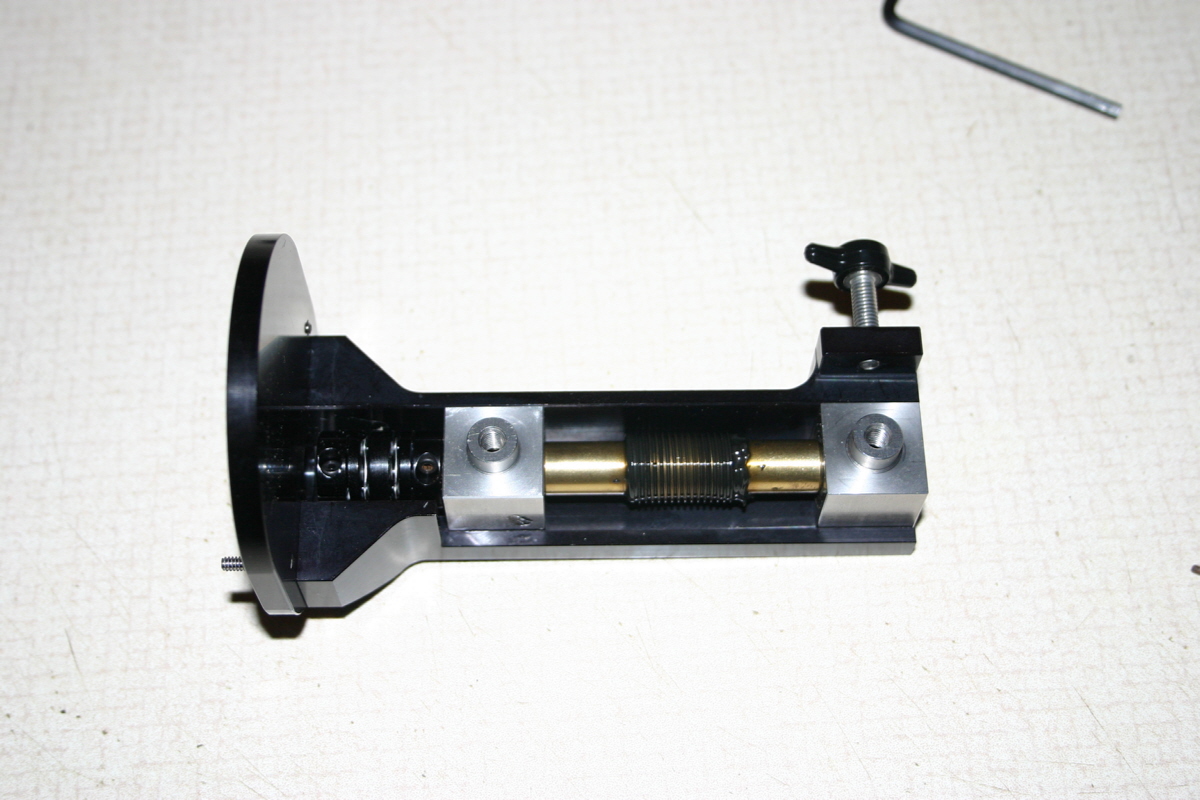
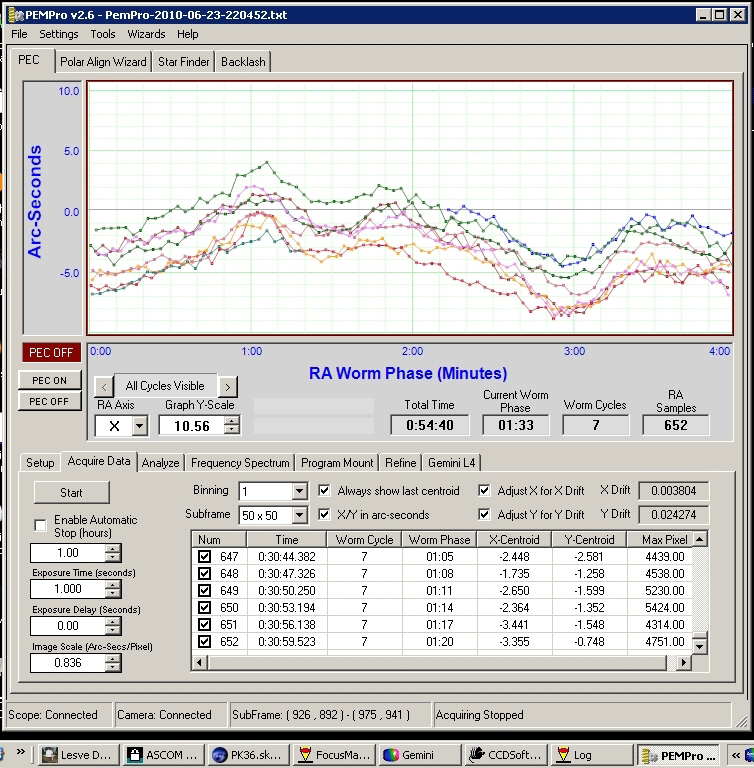
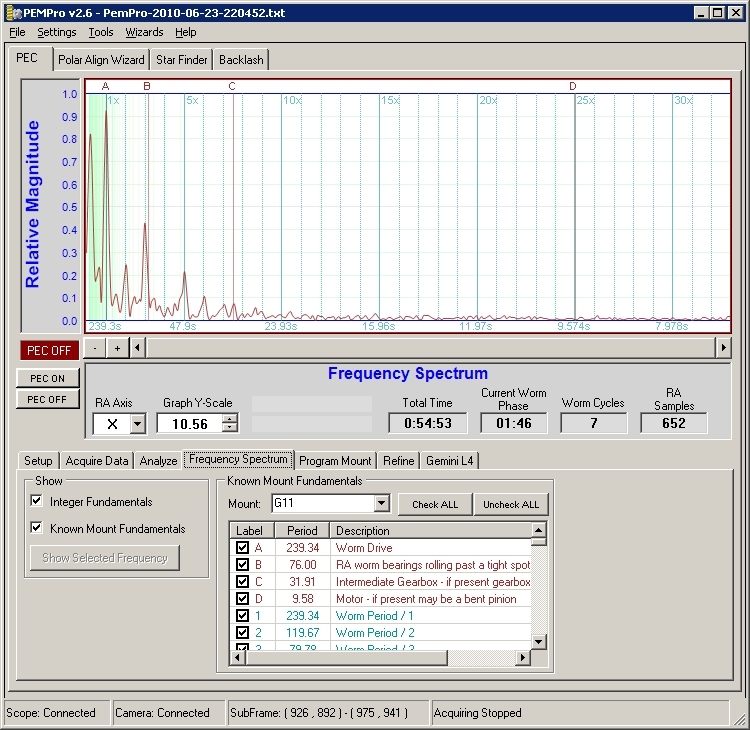
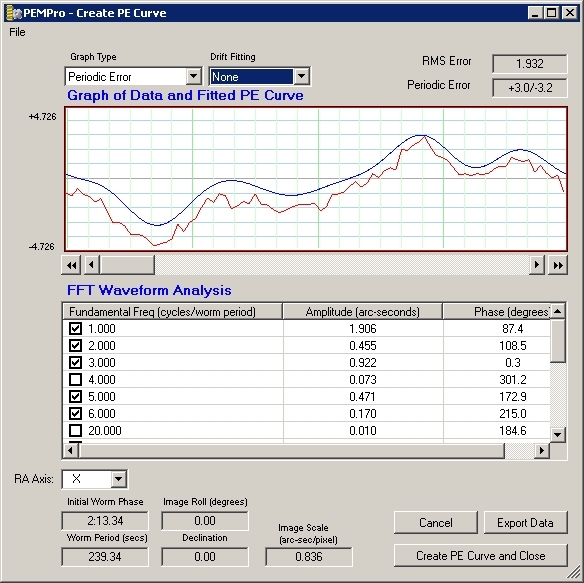
Note the .11 arc second gearbox noise at mount fundamental C which is the focal point of this test.
